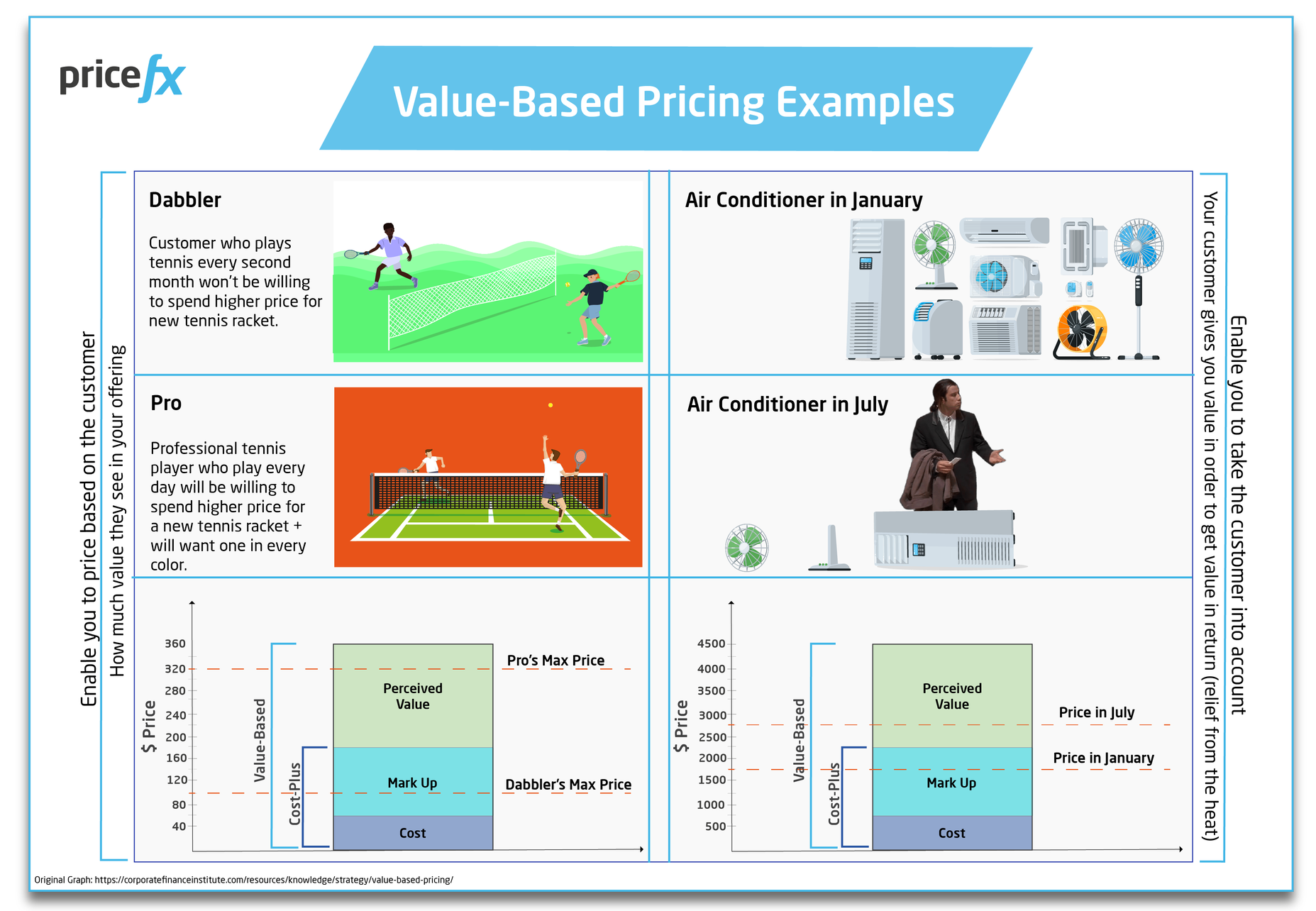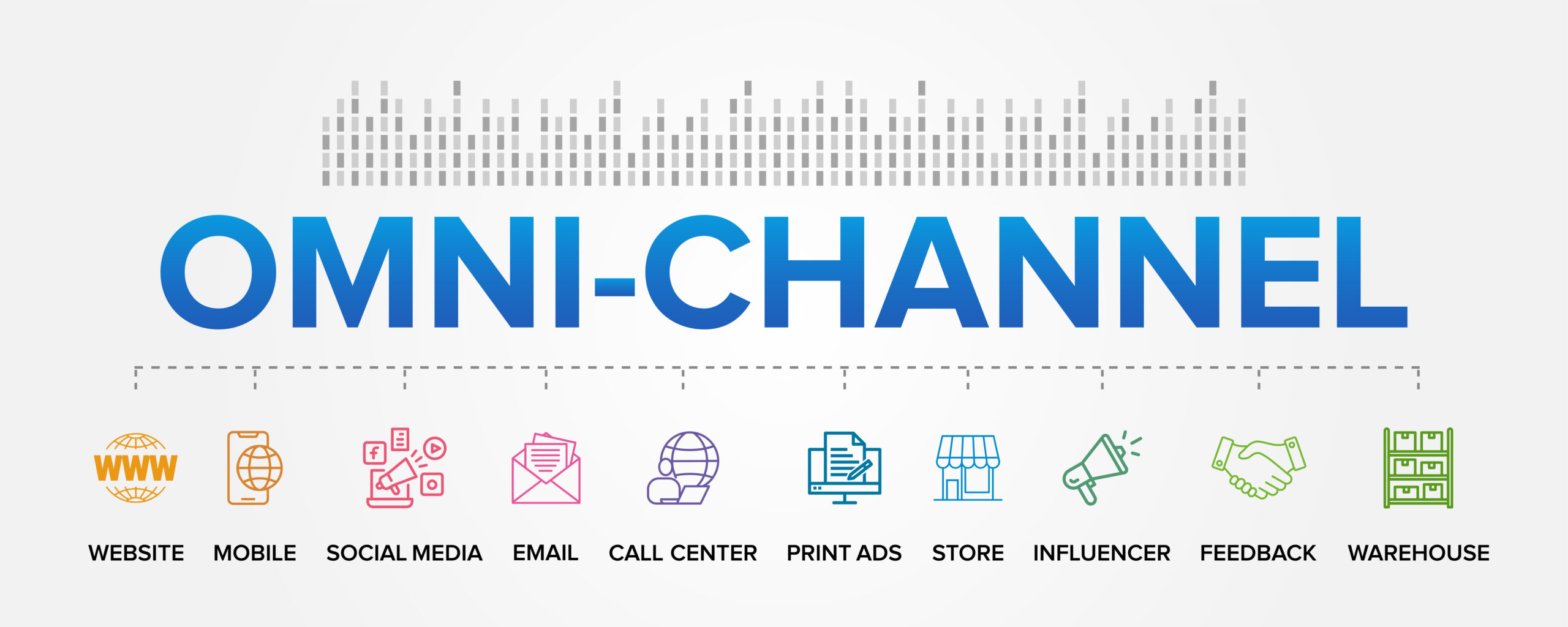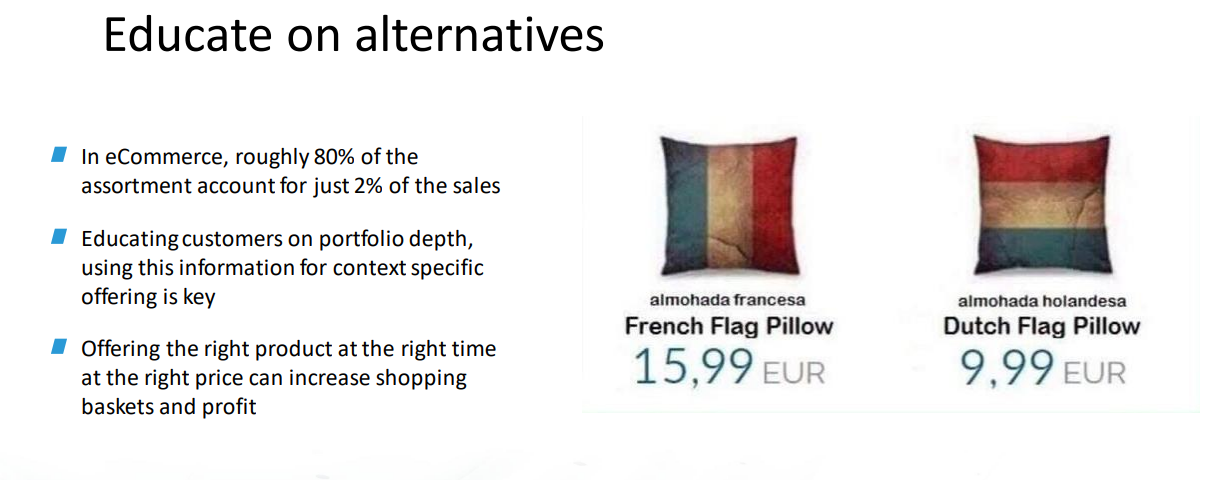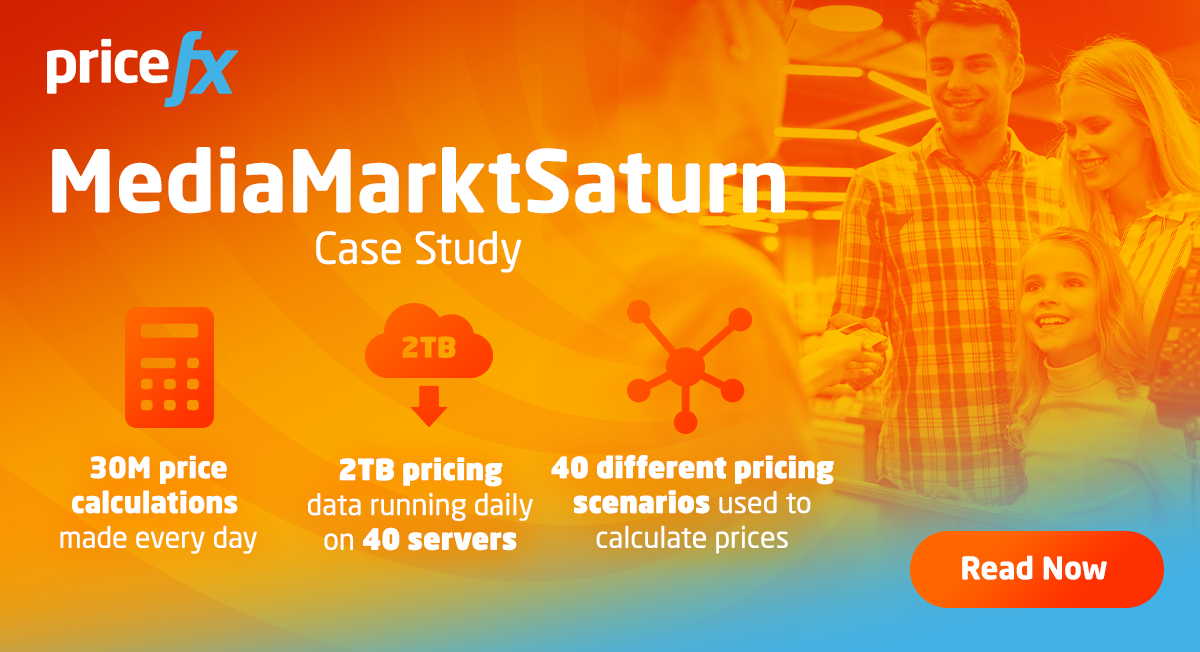What is Omnichannel Pricing? Pros & Cons + Getting Started
January 18th, 2023 (Updated 03/09/2023) | 13 min. read
By Iain Lewis
Becoming a successful omnichannel business in the modern business environment can be challenging. It requires organizations to build multiple touch-points and standardize their customer experiences regardless of how clients approach your business. It may be as simple as integrating your online store presence with your physical one and creating better experiences for each customer––all in one place. However, pricing, whether it is for B2B or B2C organizations, is not keeping up with the rate of change underway. B2B companies may have net prices hidden behind a log-in wall, while your B2C website prices can be crawled by your competitors and become out of date within minutes of their go live. So, considering how modern B2B and B2C customers are truly clear about what they want from suppliers: more channels, more convenience, more automation, and self-service plus a more personalized experience, let’s take a journey in this article to examine exactly what omnichannel pricing is.
At Pricefx, we have spent more than 10 years assisting our customers to track price moves and trends in real time. Learning in partnership with a range of omnichannel business clients, we have developed technological solutions that can assist in giving all today’s modern business organizations the kind of innovative tools they require to interact across the diverse selection of new transaction types available to them.
In this article, we will examine what omnichannel pricing is, the pros and cons of omnichannel pricing, who needs it and who doesn’t, plus what you need to get started and do it right.
What is Omnichannel Pricing?
Generally, selling your company’s goods and services (regardless if they are taking place in a B2B or B2C sales environment), across several different channels (online, bricks-and-mortar stores, social media, mobile-based applications, tele sales etc.) to provide your customers with a seamless shopping experience regardless of when, where, and how they want to buy, is usually referred to as omnichannel sales.

The good news is that it is also possible to price on an omnichannel level and that there are a selection of omnichannel pricing strategies that you can use to ensure you’re able to provide your customers with the right level of connection points all while keeping them happy.
Best practice omnichannel pricing will allow your business to manage all the specific price points you are putting out into the marketplace (by whatever method) and pull them all together in a strategic fashion that will work towards achieving your organization’s unique set of desired business outcomes.
However, you may not wish to sell all your products in your bricks-and-mortar stores or conversely, sell all of them in your web shops. Ideally, this would include having uniform pricing across e-commerce and stores. However, depending on your business, a different pricing strategy depending on each channel might make more sense.
If you sell products that require personalized configuration (say high-end electric guitars like a Fender for example), each professional musician may have their own specifications of what they require. For that specialized type of product for special customers, it may be best suited for talented musicians at the top of their field to deal with one of your experienced salespeople rather than in your online shop.
On the other hand, you may have a range of other guitars that are specialized for amateurs and learner guitarists that are all identical every time they are sold. For those customers buying those types of less specialized guitars, they should be given the choice to buy them in-store or online.
Omnichannel pricing ensures that all the different sales channels you have in your organization are aligned with each other according to your unique set of business objectives.
Having consistent pricing reduces the risk of alienating customers who would be turned off to see they will pay more, for instance, online than in-store. And you run this risk if you offer purchase options such as ‘buy online pickup in-store’ (BOPIS), or if your customers are using price check apps to research their purchases.
If driving customer loyalty and retaining customers is a central part of your business strategy, omnichannel pricing may make the most sense for your brand.
The Pros of Omnichannel Pricing
At its best, omnichannel pricing can align and vindicate your pricing strategies across all your company’s sales channels.
By aligning your pricing strategies, you can comfortably manage quality omnichannel pricing with meticulous accuracy allowing for competitive and coordinated prices across your complete range of agreements, regions, customers, and channels, while simultaneously augmenting profitability and maximizing your customer’s willingness to pay for the value of your products, or whatever else your company’s business goals are.

While you are driving the value of your products, you can also empower your customers to become as self-sufficient as possible and incentivize them to buy online only if you wish. That should decrease your cost of sales, whilst increasing how autonomous your customers are with your organization.
Remember, a younger generation of customers in both B2B and B2C environments have grown up with technology like Amazon and price comparison sites and are comfortable with it, however many buying channels you make accessible to them.
Now that many customers are familiar with whichever channel suits them best in their interaction with your organization, the enormous pay-off for your business is the reach increase that becomes possible with the use of omnichannel pricing technology.
By way of example, a 2019 report from Omnisend unearthed that those brands using three or more sales channels (compared to those with two or fewer) saw a 90% higher customer retention rate and 250% higher engagement and purchase rates.
Similarly, Target discovered in a 2020 study that the use of omnichannel strategies led to increased sales, with omnichannel shoppers spending up to 10 times more than those who only bought in-store or online.
It’s worthwhile to remember that omnichannel pricing is no longer B2C, B2B organizations have also jumped on the omnichannel bandwagon.
At the beginning of 2022, McKinsey reported that 65% of B2B companies will have transacted online by the end of the calendar year, a 12% increase on 2021 numbers, and leading technology management consultancy company, Gartner predicts by year’s end that 85% of all business conduct will take place without any form of human interaction.
Omnichannel pricing does a whole lot more than reaching more sales opportunities. With omnichannel pricing you will empower your organization to leverage profit optimization as different sales channels all have a different ‘willingness to pay’ and a range of strategies like sales targets where you are trying to make the most of like market penetration versus margin optimization in addition to decreasing the cost of sales.
Whether your business is involved in B2C or B2B, one of the most important benefits is transforming your customers to be as self-sufficient and independent as they can be.
Additionally, if customer retention is one of your organization’s primary goals, omnichannel pricing can help give you a competitive edge on pricing without annoying those customers who regularly compare prices and products across a range of channels.
The Cons of Omnichannel Pricing
Omnichannel pricing’s primary drawback is the level of change management required for your business. Based on the way things have been done for a couple of decades at least, many organizations have become settled and comfortable with their sales departments driving their pricing. For businesses with that experience and mindset, the switch to technology-driven omnichannel pricing can be a jolt to their reality.
The ongoing digitalization of the workplace in general, and therefore, adopting omnichannel pricing (and digitalization of the workplace in general), can create challenges to a adjust to culture shift that many some business may be challenged by and take time to adapt.
New business cultures and resistance to change can manifest itself in several ways, however leaving behind legacy systems like Excel or other in-house developed pricing systems is often cited as a key drawback of omnichannel pricing.
Omnichannel pricing can be a brand-new ball game and if you are not ready for it or at least willing to embrace changes in your business, you may need to rethink your suitability to pricing across different channels. Transforming into a pricing regime where quotes and prices are aligned across your CRM system, web shops, marketplaces, direct customer interaction, catalogue business etc. all with different price points managed centrally in real time can be an enormous switch.
Omnichannel pricing will require that your people (salespeople in particular) begin to think differently. Subsequently, adopting omnichannel pricing may require a flagrantly honest examination of your company’s entire system, its architecture, and the change management dilemmas involved.
Who is Omnichannel Pricing Right For?

If your company’s focus is on the customer experience, omnichannel pricing should provide your business with a range of positive outcomes. It becomes easy for your customers to interact with your company, regardless of which channel they use – meaning the barrier to purchase is significantly reduced as your pricing is either consistent across all your channels, or alternatively designed to support your channel or product-specific value-based pricing strategy.
What’s more, if your business model is reaching for customer loyalty and retention, omnichannel pricing might be the way forward for you. You can adopt a competitive pricing strategy and increase your market share without alienating those customers who spend a significant amount of time researching yours and your competitor’s products and pricing before they make their purchases.
Additionally, if your company has a flexible mindset, omnichannel could be right for you. Many B2B and B2C consumers react very differently depending on which channel they are engaging with, and omnichannel pricing allows companies a level of flexibility in their price setting. By measuring the effectiveness of promotions across channels, companies can drive insights on investments needed and decide whether it is best to have consistent promotions across all channels or choose the most effective promotion strategy for each channel.
If your company knows and loves it data, omnichannel pricing could be a good fit for your business. When adopting an omnichannel pricing experience, you are afforded with a great wealth of data about your customers, how they interact with your various channels, and you can measure the effectiveness of certain channels in comparison to others.
Check out the case study below from giant European electronics retailer MediaMarktSaturn on implementing Pricefx pricing software technology made their current omnichannel business possible:
Who is Omnichannel Pricing NOT Right For?
If you have a heavily entrenched brick-and-mortar-store-pricing process, or alternatively don’t offer your goods and services across the full gamut of different buying channels available today, you may have a little need for an omnichannel pricing set-up.
Businesses of that ilk will need to design simpler pricing set-ups and fewer simulations. Rather than running a complex omnichannel pricing regime across your entire product portfolio, you may get more impact if you focus your pricing efforts on products that are on the extremes of the spectrum—either at the very high or very low inventory turns or margins.
How to Get Started with Omnichannel Pricing
You’ll need quality pricing software to get started with omnichannel pricing.
In theory at least, you possibly could do omnichannel pricing manually without pricing software, but there is a big ‘but’.
If you operate a global business with tens of thousands of SKUs, across multiple countries in different time zones, in countries with different currencies, you will possibly require a standing army of thousands of Excel spreadsheet data operators working around the clock 24/7/365, which understandably is not a feasible nor scalable solution.
Manual price management means more chances for your company’s pricing to become siloed and isolated rather than centrally managed.
Omnichannel pricing is simply unmanageable in Excel as keeping track of the vast reams of data involved manually is beyond the scope of most companies, and what’s more, the advantage of independent price management would be lost.
How Pricing Software Makes for Effective Omnichannel Pricing
Most Next-Gen pricing software supports both B2B and B2C, whilst older First-Gen pricing software usually specializes on either B2B or B2C. Modern B2C pricing technology allows you to organize your web shop/bricks-and-mortar pricing to calculate dynamic prices for your ecommerce channels. Arguably more impressively, pricing software technology can also assist your business with the more advanced requirements of B2B pricing, including rebate management, quoting, static list price management and customer specific price point generation.
There are several ways that a quality pricing software solution can assist in streamlining your B2B or B2C business omnichannel pricing efforts;
- Customized Price Optimization – Pricing Software can help your business build up certain price points and then determine optimized prices according to your specific channel specific pricing strategies. Use the technology to calculate product prices independently of each other and establish the correct prices are being calculated for the right channel based on your purpose-built strategy. Customization allows businesses to swivel their channel strategies quickly in response to market moves.
- Upselling and Cross-Selling Maximization – The real art in upselling and cross-selling begins with an intimate understanding of your products and how they solve problems your customers may have. Your job is to understand these problems and align your product presentation to provide the solution. Pricing software can utilize those insights into your company’s pricing and guide your customers towards similar or alternative products to those that they have purchased from you in the past. Empowered by technology, educating your customers about more of your products to increase the size of shopping baskets has now become possible.

- Concentrate Your People & Resources on Areas Where You Can Make the Most Difference – Hybrid sales models using pricing software automation in combination with your experienced salespeople are becoming commonplace and lead to more intuitive and customer-appropriate responses. For example, your smaller, everyday quotes where little product differentiation occurs can be managed by an automated algorithm. Use pricing software’s automation in sales guidance to lead to an increase in conversion and sales numbers and ensure the sales are made at the optimal price points, not to mention bringing down the overall cost of sales. More complex, or larger quotes may be more suitable for your experienced salespeople.
Which Pricing Software Package Do I Need to Get Started?
We trust you have enjoyed learning what omnichannel pricing is and when used well, how it can profit your business. But remember, every company is different and what works for one organization may not perfectly suit another.
If you are interested in further exploring how to choose the best pricing software to not only drive your company’s omnichannel pricing but also to use as a total pricing technology solution, check out the article below:
Or if you already know that you’re interested in selecting Pricefx pricing software for your business needs, arrange to talk to one of our experts now:



